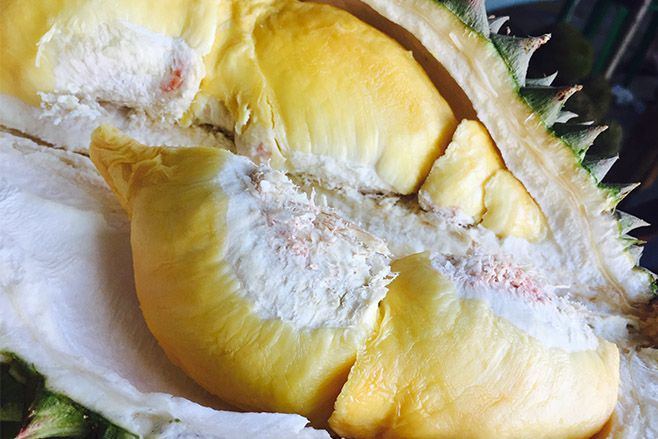Did you know that there are over 30 different kinds of durians out there and that there are many farmers who cultivate durians with different sizes and tastes all around Asia? Keep reading to find out everything you didn't know about the king of fruits
The moment many in Hong Kong have been waiting for is here (and no, it is not the end of 14 day travel quarantines—although that is exciting news too). Durian season is finally upon us. The season usually takes place from June to early October and it is typically a fantastic time with restaurants and hotels introducing a plethora of durian buffets and different sweet creations. If you can't get enough of the king of fruits, keep reading to find out some facts about this most divisive of fruits that you probably did not know about.
See also: First Look: Whey, Chef Barry Quek’s New Central Restaurant Dedicated To The Flavours Of Singapore
1. You know the durian is ripe once it falls from the tree

To know if a durian is ripe, you simply have to wait for it to fall from the tree. In fact, many farmers in the past used to sleep in their orchards just to hear the fruit drop. However, durians have become increasingly costly and precious over the years. According to Tommy Lin, a durian enthusiast who organises local tours and tasting sessions, fruits are now not allowed to drop to the ground as it will hurt their pricing.
"So now, farms install big nets underneath the trees where it is possible, while others deploy workers to climb and tie the strings to the durians stem so that when it ripens, it gets detached and drops but will not hit the ground and damage the thorns," he says.
That said, not everyone necessarily enjoys ripe durians. Mark Ng, a food experience partner from tour company Simply Enak, said: "In Thailand, some prefer unripe fruit mainly to make into durian chips [since] you need them to have a hard texture. So we harvest them when they are still on the tree."
Related: Karana, Asia's First Whole-Plant Based Meat Brand Launches In Hong Kong




